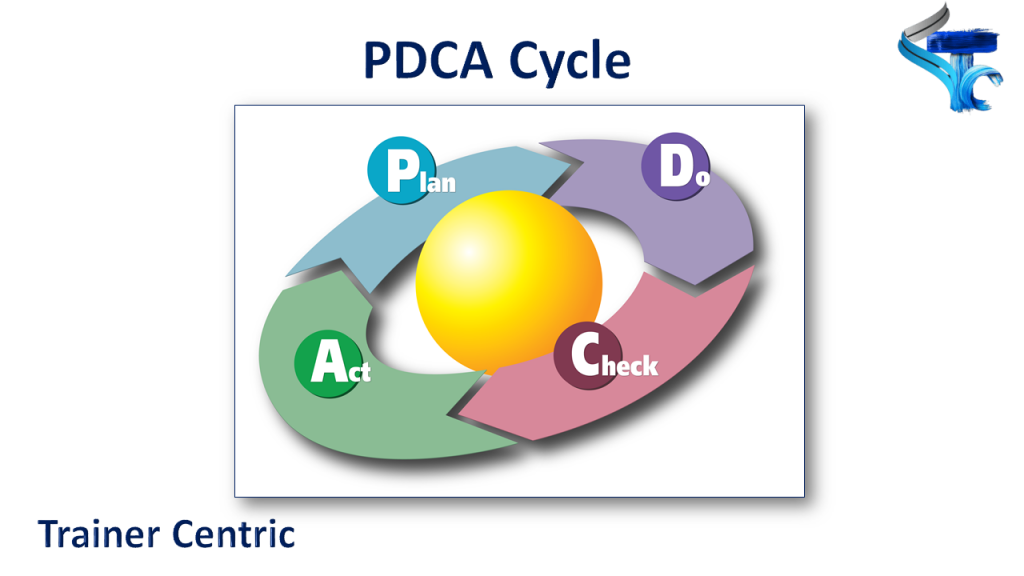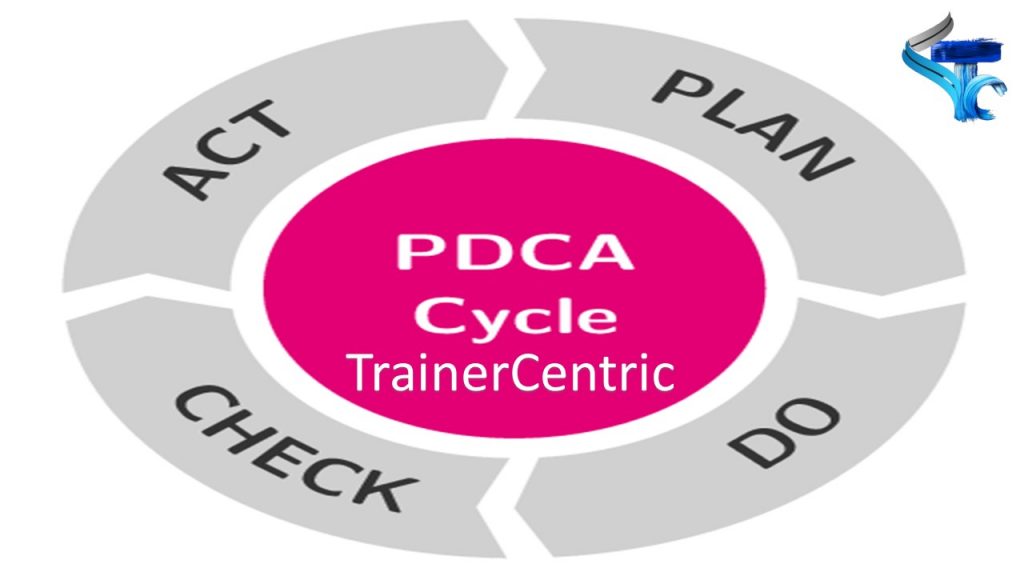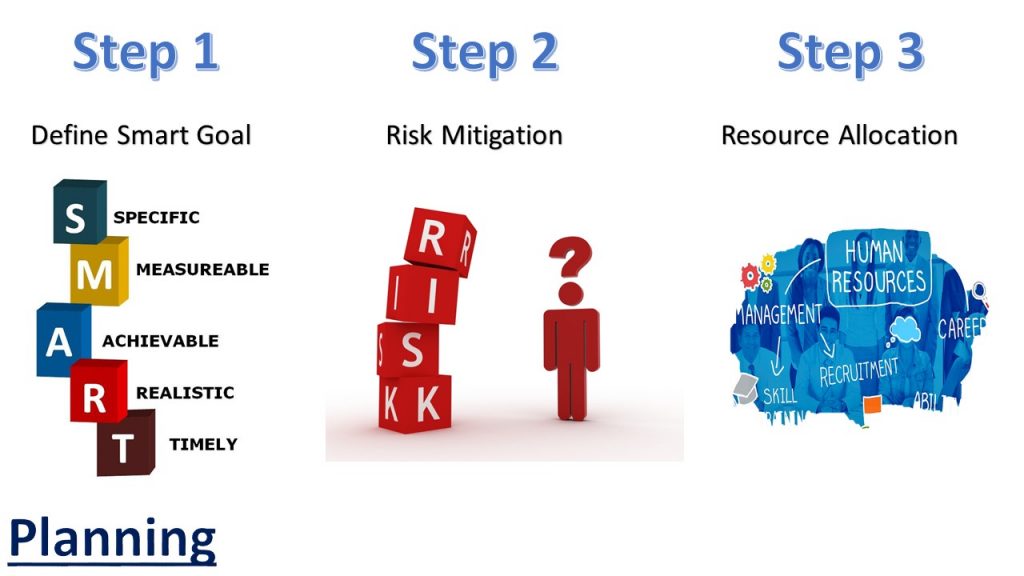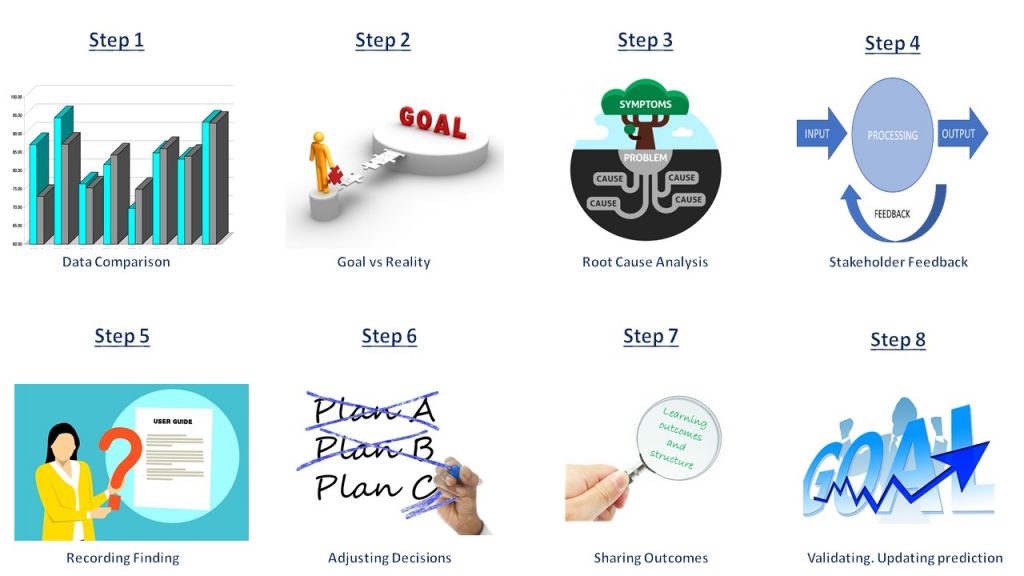In the fast-paced world of today, the pursuit of success is a constant journey filled with challenges and opportunities. To navigate this path effectively, businesses and individuals alike turn to proven methodologies that foster continuous improvement and innovation. Among these methodologies, the PDCA (Plan-Do-Check-Act) cycle stands out as a beacon of systematic and iterative progress.
In this article, we will dive deep into the PDCA cycle exploring the exploring the methodology, offering a roadmap for organizations and individuals to enhance their processes, drive innovation, and achieve sustainable success. Let’s get started.

What is PDCA (Plan-Do-Check-Act) Cycle?
In the opening section, we unravel the essence of the PDCA cycle, breaking down its four fundamental stages and illustrating how this cyclical process forms the backbone of successful problem-solving and improvement initiatives.
The Genesis of PDCA cycle:
PDCA, which stands for Plan-Do-Check-Act, is a management methodology that has its roots in the field of quality management and continuous improvement. This is one of the critical tools in Kaizen methodology. It is often referred to as the Deming Cycle or the Deming Wheel, named after W. Edwards Deming, a renowned statistician, professor, author, lecturer, and consultant who played a significant role in the development of quality management concepts.

- Early Development (1920s-1930s): The origins of PDCA can be traced back to the early 20th century when statistical methods were gaining prominence in industrial processes. W. Edwards Deming, along with other quality pioneers like Walter A. Shewhart, began developing statistical techniques to improve manufacturing processes.
- Shewhart Cycle (1930s): Walter A. Shewhart, a colleague of Deming, introduced the concept of the Shewhart Cycle in the 1930s. This cycle consisted of three steps: specification, production, and inspection. Shewhart’s work laid the foundation for what would later become the PDCA cycle.
- Deming’s Contribution (1950s-1980s): W. Edwards Deming expanded and refined the Shewhart Cycle, incorporating additional elements and emphasizing a systematic approach to continuous improvement. Deming introduced the four-step PDCA cycle: Plan, Do, Check, and Act. He stressed the importance of a cyclical, iterative process for quality improvement.
- Introduction in Japan (1950s): After World War II, Japan sought to rebuild its industries and invited W. Edwards Deming to share his expertise. Deming introduced his management philosophy, including the PDCA cycle, to Japanese executives and engineers. This marked the beginning of the widespread adoption of PDCA in Japan and its integration into the Japanese approach to quality management.
- Spread to Western Industries (1980s-1990s): In the 1980s and 1990s, Western companies increasingly recognized the effectiveness of the PDCA cycle in achieving continuous improvement and quality management. Deming’s influence grew, and organizations around the world began to implement PDCA as a fundamental part of their management practices.
- Integration into Various Management Systems (1990s-Present): PDCA became an integral component of various management systems, including Total Quality Management (TQM), Six Sigma, and Lean Manufacturing. It is widely used in industries such as manufacturing, healthcare, information technology, and service sectors to drive continuous improvement, problem-solving, and innovation.
Today, PDCA remains a cornerstone of quality management and organizational improvement, providing a structured and iterative approach for organizations to plan, execute, evaluate, and adjust their processes and systems.
Benefits of PDCA Cycle
The PDCA (Plan-Do-Check-Act) cycle offers several benefits to organizations, contributing to continuous improvement and effective management. Here are some key advantages:

- Systematic Improvement:
- PDCA provides a structured and systematic approach to problem-solving and improvement. It encourages organizations to plan, implement, evaluate, and adjust processes in a logical sequence, leading to more effective and sustainable improvements.
- Continuous Learning:
- The iterative nature of PDCA promotes a culture of continuous learning. Organizations can apply lessons learned from each cycle to subsequent ones, fostering a dynamic environment where knowledge and experience contribute to ongoing improvement.
- Risk Reduction:
- PDCA allows for controlled experimentation through small-scale tests during the “Do” phase. This approach helps organizations identify potential risks and issues on a limited scale before implementing changes on a larger scale, reducing the likelihood of negative impacts.
- Data-Driven Decision-Making:
- The PDCA cycle emphasizes the importance of collecting and analyzing data at each stage. This data-driven approach enables organizations to make informed decisions based on evidence, leading to more effective problem-solving and improvement strategies.
- Employee Engagement:
- Involving employees in the PDCA process fosters a sense of ownership and engagement. When employees are actively participating in the improvement process, they are more likely to contribute innovative ideas, take ownership of changes, and feel motivated to improve overall performance.
- Flexibility and Adaptability:
- PDCA’s iterative nature allows organizations to adapt quickly to changing circumstances. As new information becomes available or the business environment evolves, the organization can adjust its plans and strategies accordingly, ensuring ongoing relevance and effectiveness.
- Standardization of Processes:
- Successful improvements identified through the PDCA cycle can be standardized and integrated into daily operations. This helps establish consistent and standardized processes, reducing variability and enhancing overall efficiency.
- Customer Satisfaction:
- Continuous improvement driven by PDCA often leads to enhancements in product or service quality. This, in turn, can positively impact customer satisfaction by meeting or exceeding customer expectations and addressing their evolving needs.
- Alignment with Management Systems:
- PDCA aligns well with various management systems and methodologies, such as Total Quality Management (TQM), Six Sigma, and Lean Manufacturing. This compatibility makes it easier for organizations to integrate PDCA into their existing quality and management practices.
- Strategic Goal Achievement:
- By systematically addressing issues and improving processes, PDCA helps organizations move closer to achieving their strategic goals. It provides a methodical approach to aligning daily activities with broader organizational objectives.
In summary, the PDCA cycle offers a comprehensive and adaptable framework that enables organizations to continually assess, refine, and enhance their processes, fostering a culture of continuous improvement and adaptability in the face of changing circumstances.
The PDCA Cycle Framework
The PDCA framework, also known as the Deming Cycle or Plan-Do-Check-Act cycle, is a systematic and iterative approach to continuous improvement and problem-solving. It consists of four key stages:
- Objective: Clearly define the problem or goal that needs improvement.
- Analysis: Gather relevant data and information to understand the current state.
- Strategy: Develop a plan for improvement, outlining the steps to be taken and the resources required.
- Predictions: Make predictions about the expected outcomes of the proposed changes.
- Implementation: Execute the plan and carry out the proposed changes.
- Documentation: Record relevant data during the implementation phase.
- Training: Provide necessary training to personnel involved in the process changes.
- Small-Scale Testing: If feasible, conduct a pilot or small-scale test to minimize risks.
- Monitoring: Collect and analyze data to assess whether the implemented changes have resulted in the desired improvements.
- Comparison: Compare actual results with the predicted outcomes from the planning phase.
- Identify Deviations: Identify any deviations or unexpected issues that may have occurred during the implementation.
- Root Cause Analysis: If the desired improvements are not achieved, conduct a root cause analysis to understand the underlying issues.
- Adjustment: Based on the findings from the checking phase, make necessary adjustments to the plan.
- Standardization: If the changes prove successful, establish standard procedures and practices.
- Learning: Document lessons learned from the entire PDCA cycle.
- Continuous Improvement: Apply the knowledge gained to subsequent cycles for continuous improvement.
How to Plan:

Step 1: The planning stage begins with a clear articulation of objectives. We delve into the importance of defining specific, measurable, achievable, relevant, and time-bound (SMART) goals, ensuring that the organization’s direction is well-defined.
Step 2: An integral aspect of the planning phase is identifying potential risks and developing strategies for mitigation. We explore how a thorough risk assessment contributes to proactive problem-solving and the prevention of roadblocks during implementation.
Step 3: Efficient allocation of resources is a hallmark of effective planning. From financial resources to human capital, this chapter delves into strategies for optimizing resource allocation to support the successful execution of the plan.
Step 4: Once you have deployed enough resources and are getting enough data from the resources, you will need to analyze the data. This is to ensure that you have enough support documentation to help you strategize your next move into execution phase.
Step 5: Based on the trends of the previous data (preferably one quarter), you will need to predict the outcome of the PDCA cycle. The key point is to being realistic and not to over predict the outcome.
Step 6: Once you have an objective, data analysis and enough resources, you will need to strategize a plan which should include what you are supposed to do, a brief description about that, who is the responsible resource for the task and when is the end time of the task. You can also include any additional information such as subtasks, supervisor and so on. You can use the below template to define a clear plan.

How to conduct DO phase?
The “Do” phase in the PDCA (Plan-Do-Check-Act) cycle is the stage where the planned improvements are implemented. It involves carrying out the actions outlined in the planning phase, putting the proposed changes into practice. Here are key aspects and considerations during the “Do” phase:
- This phase involves executing the plan developed during the “Plan” stage. It may include changes to processes, procedures, equipment, or other relevant aspects of the organization.
- Effective communication is crucial during the implementation of changes. Clear communication ensures that all relevant stakeholders understand their roles and responsibilities. Additionally, training may be necessary to equip employees with the skills needed to implement the changes successfully.

Here are the steps that you can follow in this phase:
Step 1: Execute the plan developed during the planning phase. This involves making the actual changes to processes, systems, or other relevant elements.

Step 2: Communicate the changes to all relevant stakeholders. Provide necessary training to employees involved in the implementation to ensure a smooth transition.

Step 3: Regularly monitor the implementation to ensure that it aligns with the planned actions. Address any unexpected issues or challenges promptly.

Step 4: Continuously collect data during the implementation phase. This data will be crucial for evaluating the success of the changes during the “Check” phase.

Step 5: Thoroughly document the changes made, any adjustments, and challenges faced during the implementation. This documentation supports the learning process and can also be used for future projects as a reference.
The success of the “Do” phase sets the stage for the evaluation (Check) and adjustment (Act) phases in the PDCA cycle. A well-executed implementation increases the likelihood of achieving the desired improvements and sets the foundation for continuous learning and refinement in subsequent cycles.
What is Check Phase and how to execute this phase?
The “Check” phase in the PDCA (Plan-Do-Check-Act) cycle is a critical step where the implemented changes are evaluated, and the outcomes are compared against the predictions made during the planning phase. This phase involves a comprehensive analysis of data and performance metrics to determine the success of the improvement efforts. Here are key aspects and considerations during the “Check” phase:
Step 1: Comparing Actual vs. Predicted Outcomes: Evaluate the data collected during the “Do” phase and compare it against the predictions made in the planning phase. This involves a quantitative analysis of performance metrics to assess the effectiveness of the implemented changes.
Step 2: Assessing Achievement of Goals: Determine whether the goals and objectives set during the planning phase have been achieved. This assessment provides a clear indication of the success of the improvement efforts.
Step 3: Understanding Deviations: If the actual outcomes deviate from the predicted results, conduct a root cause analysis. Identify the underlying reasons for any discrepancies, allowing for a deeper understanding of the factors influencing the results.
Step 4: Soliciting Stakeholder Input: Gather feedback from employees involved in the implementation and other relevant stakeholders. Their perspectives can provide qualitative insights into the process, revealing nuances that might not be captured solely through quantitative data.
Step 5: Recording Findings: Thoroughly document the findings of the “Check” phase. Include details about the performance metrics, the success of the implemented changes, any unexpected issues encountered, and insights gained through analysis.

Step 6: Informing Adjustment Decisions: The outcomes of the “Check” phase guide decision-making in the subsequent “Act” phase. The analysis and findings inform whether adjustments to the improvement plan are necessary and, if so, the nature of those adjustments.
Step 7: Sharing Outcomes: Communicate the results of the “Check” phase to relevant stakeholders. Transparency about the performance of implemented changes fosters organizational understanding and alignment.
Step 8: Validating or Updating Predictions: Assess the accuracy of the predictions made during the planning phase. Use this information to refine predictive models for future improvement initiatives.
The “Check” phase is pivotal for organizational learning and continuous improvement. The insights gained during this phase inform decisions in the “Act” phase, setting the stage for the next iteration of the PDCA cycle. A thorough and thoughtful evaluation in the “Check” phase contributes to the overall effectiveness of the PDCA methodology in driving positive organizational change.
ACT phase: How to Execute?
The “Act” phase in the PDCA (Plan-Do-Check-Act) cycle is where organizations take decisive actions based on the findings and insights gained during the “Check” phase. This phase is crucial for driving continuous improvement and refining processes. Here are key aspects and considerations during the “Act” phase:
Step 1: Adjustment of the Plan:Use the data and information collected during the “Check” phase to make informed decisions about adjustments to the improvement plan. Identify areas where improvements are needed and revise the plan accordingly.
Step 2: Refinement of Strategies: If the analysis reveals areas of inefficiency or suboptimal performance, refine the strategies outlined in the plan. Consider alternative approaches that may better address the identified issues.
Step 3: Addressing Root Causes: If the root cause analysis from the “Check” phase uncovered deficiencies in the implemented changes, take corrective actions to address these issues. This may involve process modifications, resource reallocation, or additional training.
Step 4: Continuous Improvement Actions: Identify successful elements of the implemented changes and leverage them for further improvement. Determine how positive outcomes can be replicated or scaled in other areas of the organization.
Step 5: Standardization of Processes: If the changes have proven successful and consistent, consider standardizing procedures. Document and communicate these standardized processes to ensure consistency and reliability in future operations.

Step 6: Implementation of Changes: Implement the refined plan and changes as outlined in the “Act” phase. Ensure that all relevant personnel are aware of the adjustments and understand their roles in the updated processes.
Step 7: Establishing Ongoing Monitoring: Implement mechanisms for ongoing monitoring of the adjusted processes. Create a feedback loop to gather information continuously, enabling timely identification of any emerging issues.
Step 8: Documentation of Changes: Thoroughly document the adjustments made during the “Act” phase. This documentation serves as a record of changes and provides insights for future assessments and improvements.
Step 9: Iteration and Repeat: The “Act” phase is not the end but rather a transition to the next iteration of the PDCA cycle. Apply the lessons learned to initiate a new cycle of planning, doing, checking, and acting, thus perpetuating a culture of continuous improvement.
The “Act” phase is a dynamic and forward-looking stage that sets the stage for ongoing improvement. By actively responding to the insights gained during the “Check” phase, organizations can adapt, optimize, and refine their processes to achieve higher levels of performance and efficiency.
Conclusion
In conclusion, the PDCA (Plan-Do-Check-Act) cycle stands as a powerful and time-tested methodology for fostering continuous improvement and driving positive change within organizations. Rooted in the principles of systematic problem-solving, the PDCA cycle offers a structured framework that guides businesses through a series of iterative steps, ensuring a dynamic and adaptable approach to enhancement.
Crucially, the PDCA cycle isn’t a linear process but a continuous loop of learning and improvement. Its iterative nature allows organizations to build on successes, learn from mistakes, and adapt to evolving circumstances. This flexibility makes PDCA applicable across various industries, from manufacturing to service sectors, and compatible with different management systems, such as Total Quality Management (TQM) and Lean Manufacturing.
By promoting a culture of continuous improvement, the PDCA cycle aligns with the demands of a dynamic business environment. It encourages organizations to embrace change, learn from experiences, and cultivate a mindset that values ongoing refinement. Successful implementation of the PDCA cycle not only leads to tangible improvements in processes and outcomes but also nurtures an organizational ethos that prioritizes innovation, efficiency, and adaptability.

![The Power of Storytelling in Corporate Training: Igniting Success and Inspiring Growth [2023]](https://trainercentric.com/wp-content/uploads/2023/06/storytelling-1024x576.jpg)

